During Winter break, the Spring students and the Dickinson in France team wen to Paris for four days.
Most of the students had not been to Paris before the trip. Before leaving, Ryan perceived Paris through cinema : “I imagine Paris idealistically – as a mix of the movies Amélie and Paris, je t’aime – a stereotype that is probably fairly far from reality.” Molly already knew that the trip was going to be tiring: “I imagine Paris as an onion with lots of different layers. It’s going to be difficult to see Paris in only four days, but I’m ready for the challenge.”
Our group activities started the moment we got to the capital, with a cruise on the Seine to get a first glimpse of the city, and a group meal at the Paris Mosque’s Restaurant, where the students tasted typical Moroccan dishes.
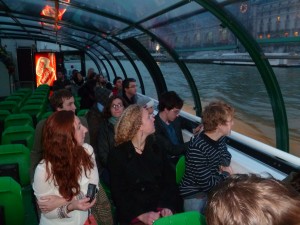
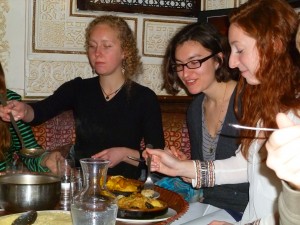
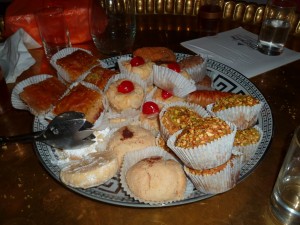
The students discover Paris from the Seine The students at the Paris Mosque – couscous, tajines, honey and almond pastries
The next morning, the group went to the Pompidou Center, where a guide led them through a selection of the museum’s permanent collection. Both art-lovers and the non-initiated were able to gain a better knowledge of modern and contemporary art. The artwork sparked deep reflections on the represented subjects.
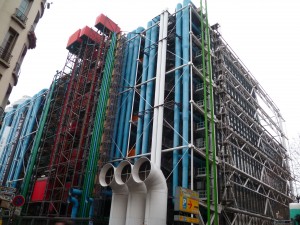
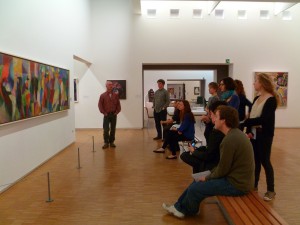
The Pompidou Center from Boulevard Sébastopol In front of Le Bal by Sonia Delaunay
Sam and Sarah were attracted by two works in particular:
“At the Pompidou Center, there was an installation that I particularly liked,” explained Sam about a work by Pascal Convert. “It was a rectangular basin made of wood and filled with glass that made me think of water. But in the glass you could see the faint image of a mother holding her child, and to see the image, you had to examine the basin thoroughly because the glass was broken.”
“Of the artwork we saw, I really loved the one with the hands. It depicts a political story told just by the movement of the photographed hands. The image is in black and white, but it tells a much larger story than a lot of the other artwork,” affirmed Sarah about a photo by Johannes Kahrs.
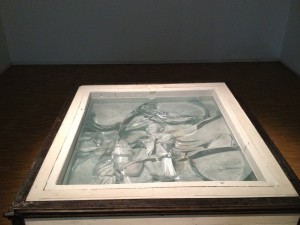
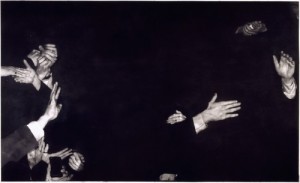
Pascal Convert, Le temps scellé (Sealed Time), 2009 Johannes Kahrs , Finally Accept Fate, 2002
Molly explained her emotions when faced with the « bizarre »:
“I really liked the Pompidou Center. Not only was the building bizarre, but all of the artwork inside it were strange – and that’s what I loved about it. Modern and contemporary art are often ignored by people because they don’t think they constitute ‘art’. But art is everywhere. It depends on how you see the world and how you look at what is around you. I saw this clearly by walking through the hallways of the Pompidou Center. I will never forget this feeling of seeing the bizarre and accepting it as it is.”
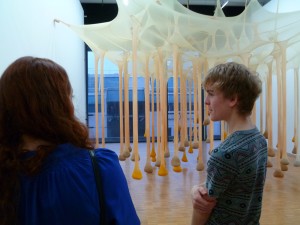
Todd and Sarah in front of Ernesto Neto’s We stopped just here at the time (2002)
The next day, at the Cité de l’Immigration, the students were able to make a connection between the French colonial period and immigration today. Ryan was particularly interested by…
“…the role that imperialism has played in the creation of a French identity. I have the impression that, until recently, France has maintained a mentality that considers French as the center of the world, surrounded by colonies and savage lands that can be exploited for their riches. Although France has lost its empire, I think this paternalist view still exists. If you listen to how people talk about immigrants, Islam or post-colonialism in general, you’ll notice little xenophobic beliefs, found everywhere in the world, that soaked into the French mentality during the imperialist period and during their civilizing mission.”
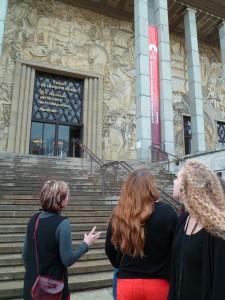
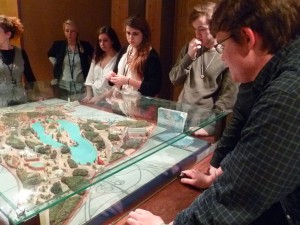
The students at the Cité de l’Immigration
In the evening at the Comédie Française, the students dove into Marcel Aymé’s satirical world by attending his play, La Tête des Autres (The Heads of Others). The play allowed many of them to reflect on society. Lindsey commented that “it was interesting because the death penalty is unauthorized in France, but it was the subject of the play.” Sam became aware of society’s hypocrisy, which Aymé was criticizing: “The play criticized that fact that human beings often ignore injustice except when they are the victims of it and also the fact that even the most idealist people – represented by the escaped prisoner – are in the end only impure people who only care about themselves. It’s dark and harsh criticism; I think it’s fairly legitimate, but I don’t believe it’s completely correct. I’d like to have more faith in humanity than that…”

During their free time, the students discovered Paris in their own way.
Todd confided that he had “unique experiences in Paris.” He said: “After the Pompidou Center, I felt very inspired and wrote a lot of poetry in the metro, followed by a Bikram yoga session. After this experience, I walked to the hotel, stopping in the small galleries along the way.”
Mana drew our attention to the mass of people that crowds the streets of Paris: “There are a lot of people in Paris, especially tourists…I think that’s why Parisian’s are less open than people in Toulouse.”
Ryan realized, while walking through the streets, that the architecture in Paris is a contrast of the old and the new.
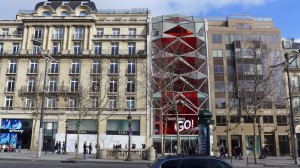
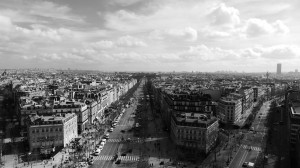
History and Modernism
In the first photo, Ryan explained that “you can see how history and modernism coexist in France. When you look at the architecture on the Champs Elysées, you can see buildings with a traditional style right next to a really modern Citroën building. This contrast shows how France, and Paris in particular, have tried to preserve their history while also modernizing the city.” The second photo shows “a snapshot of Place de l’Etoile from the top of the Arc du Triomphe, he historical center of Paris. On the horizon, you can see skyscrapers sprouting out of old Paris.”
Finally, Sarah described a portrait of Parisian women: “Parisian women wear chic clothes, with neutral colors and a big leather bag. She wears high heals, which is very easy for her. She’s confident and walks with her boyfriend or friends, who are just as chic as she is.”
The students came back to Toulouse tired, but with lots of unforgettable experiences of the French capital.
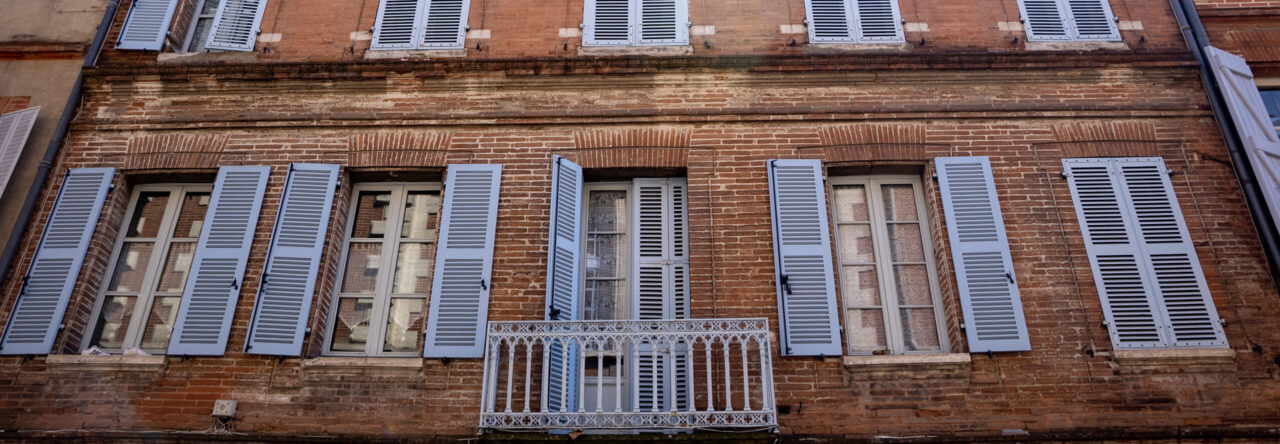

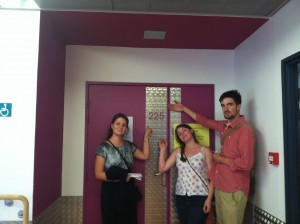
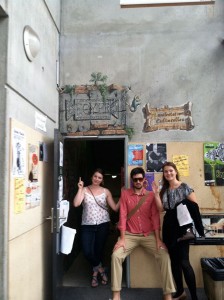
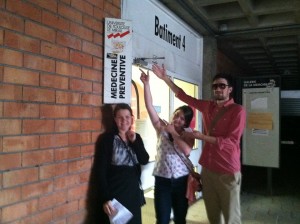
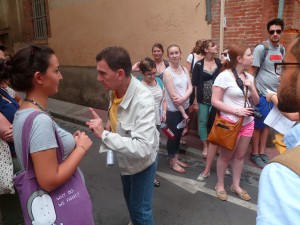
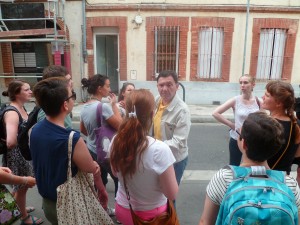
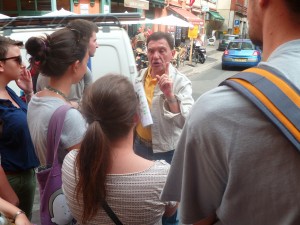
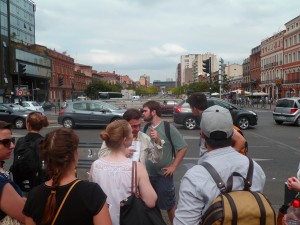













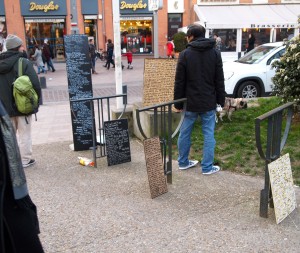
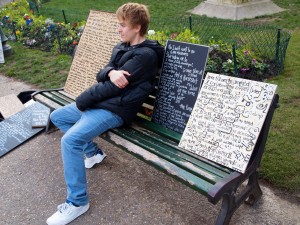
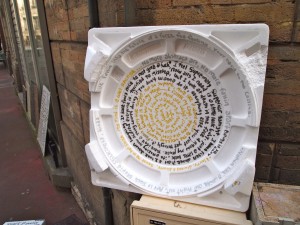
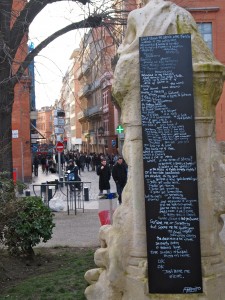

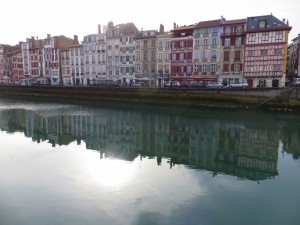
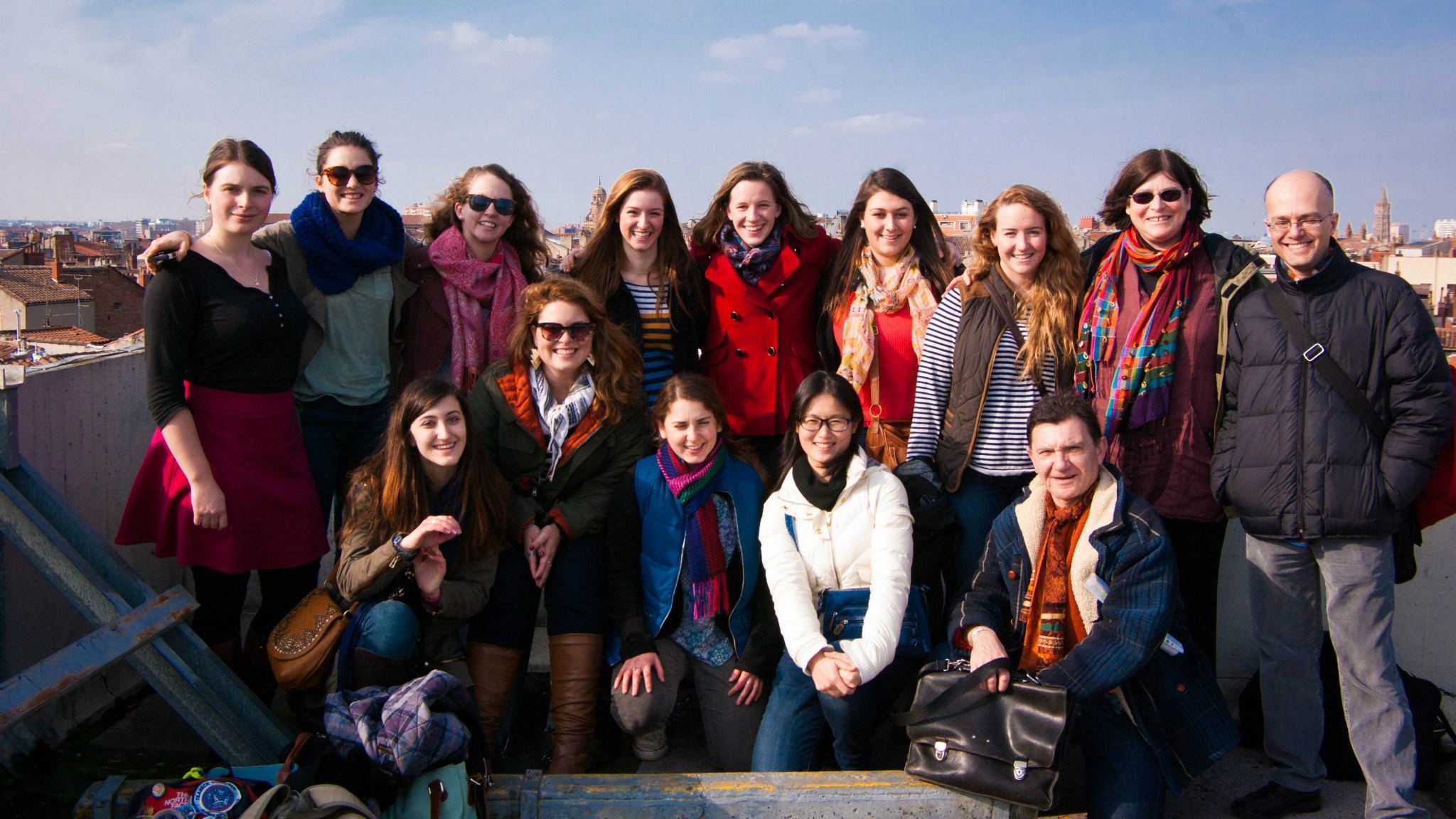

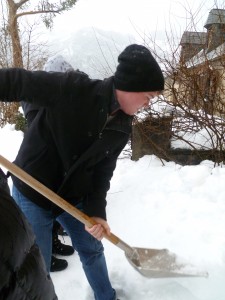
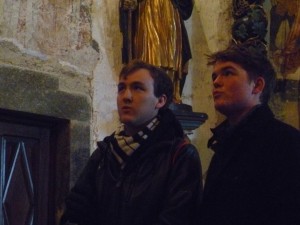
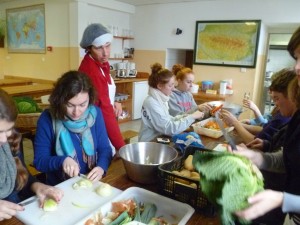
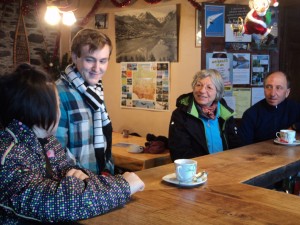
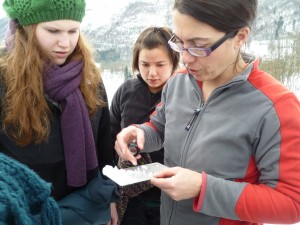
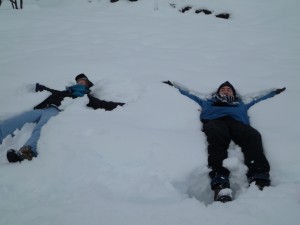
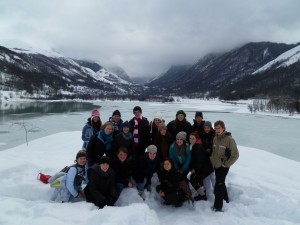
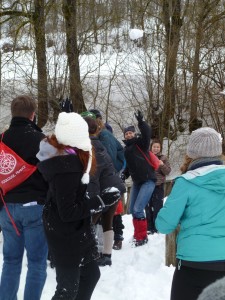

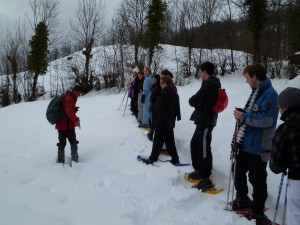
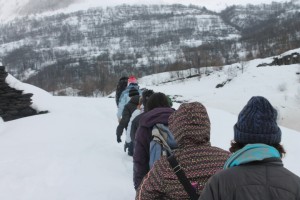
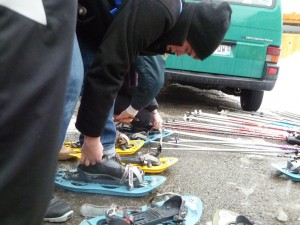
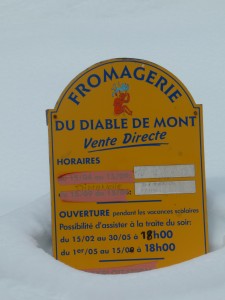

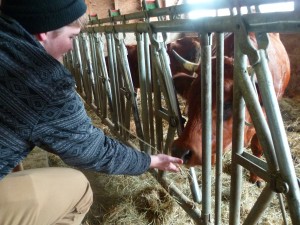
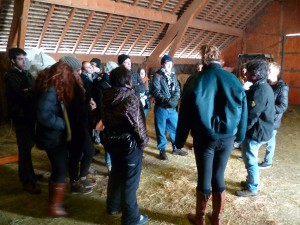
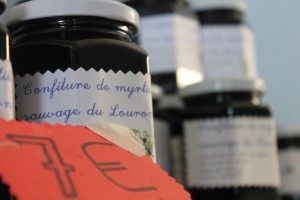
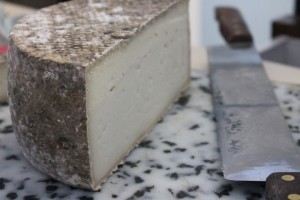
 A strong point of my time in Toulouse until now is my volunteer experience. On Tuesdays, I go to SupAéro, a university of aeronautic engineering and space in Toulouse. The university has a debate team, which is taught by an Irish professor. I debated in high school, and thus during each session of my volunteering work I help the professor teach the skill of debating to the SupAéro students. The volunteering intrigues me because all the competitions are in English. Thus, it is necessary for the students to learn English before they do debating. Each session, the team divides in two and we practice arguing the two sides of the motion. I am always impressed by the capacity of the students to debate in English with fluidity and eloquence. To me, the rules of the French Debating Association (FDA), specifically the rule that stipulates that all the competitions must be in English, seem to be culturally divergent. I had the impression that the French have an unbreakable pride of the French language, but debating, an intellectual exercise with ancient origins, is in English. Although at the time I didn’t understand the linguistic inconsistency, I now know that the usage of English indicates the will of the French to open the minds of the students, and to teach them a language like English, which is used around the world for business and diplomacy. I reflected on debating at SupAéro and deduced that the engagement of the French universities regarding debate illustrates the strength of the longstanding tradition in France of intellectual discourse.
A strong point of my time in Toulouse until now is my volunteer experience. On Tuesdays, I go to SupAéro, a university of aeronautic engineering and space in Toulouse. The university has a debate team, which is taught by an Irish professor. I debated in high school, and thus during each session of my volunteering work I help the professor teach the skill of debating to the SupAéro students. The volunteering intrigues me because all the competitions are in English. Thus, it is necessary for the students to learn English before they do debating. Each session, the team divides in two and we practice arguing the two sides of the motion. I am always impressed by the capacity of the students to debate in English with fluidity and eloquence. To me, the rules of the French Debating Association (FDA), specifically the rule that stipulates that all the competitions must be in English, seem to be culturally divergent. I had the impression that the French have an unbreakable pride of the French language, but debating, an intellectual exercise with ancient origins, is in English. Although at the time I didn’t understand the linguistic inconsistency, I now know that the usage of English indicates the will of the French to open the minds of the students, and to teach them a language like English, which is used around the world for business and diplomacy. I reflected on debating at SupAéro and deduced that the engagement of the French universities regarding debate illustrates the strength of the longstanding tradition in France of intellectual discourse.
